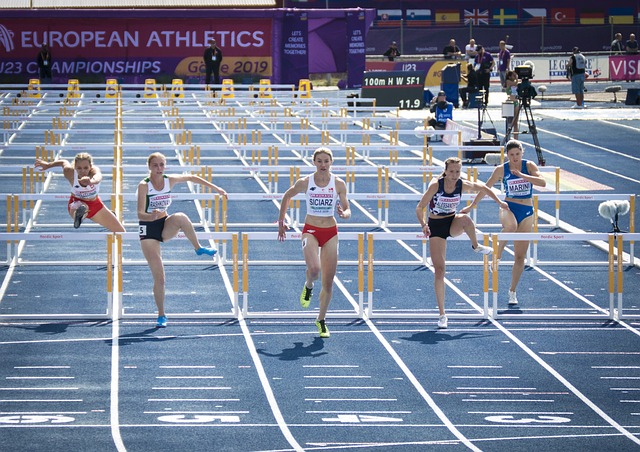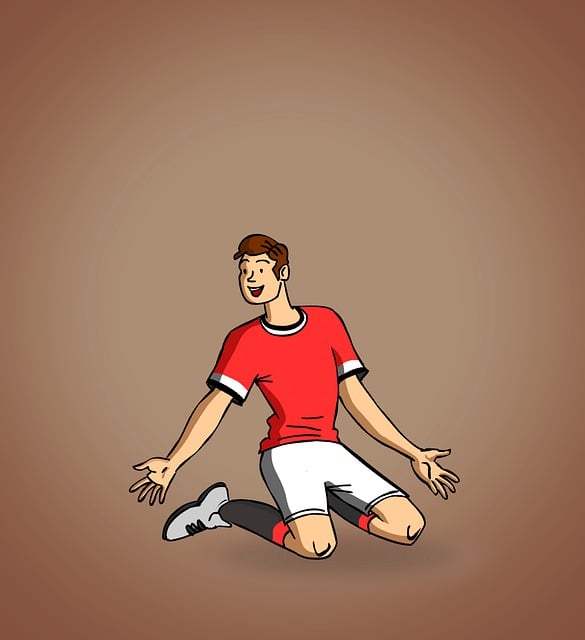Advanced recovery techniques like sports regenerative treatments and injury recovery therapy are transforming athletic care. Utilizing non-invasive therapies such as cold therapy, light-based treatments, and targeted massage, these methods stimulate the body's natural healing processes for faster recovery. Techniques like PRP, ESWT, and laser treatments target injuries, enhance circulation, break down muscle knots, and promote optimal performance, minimizing downtime and future injury risk. By integrating these athletic recovery solutions into routines, athletes can expedite post-workout recovery and effectively manage athletic injuries.
In today’s competitive sports landscape, faster and more efficient athletic recovery is crucial for optimal performance and preventing injuries. Traditional methods often involve invasive treatments, but a growing trend in the industry focuses on non-invasive solutions. This article explores innovative approaches to athletic recovery, including sports regenerative treatments, advanced recovery techniques, and injury recovery therapy. We delve into how these cutting-edge methods enhance muscle recovery, speed up performance recovery, and provide effective athletic injury treatment.
- Understanding Non-Invasive Solutions for Athletic Recovery
- Benefits of Sports Regenerative Treatments
- Advanced Recovery Techniques: A Deep Dive
- Injury Recovery Therapy: How It Works and Why It's Effective
- Integrating Muscle Recovery Solutions into Your Routine
Understanding Non-Invasive Solutions for Athletic Recovery

In the pursuit of optimal athletic performance and minimizing downtime, non-invasive solutions for athletic recovery have emerged as a game-changer in the sports arena. These innovative approaches, often collectively referred to as regenerative sports therapy or advanced recovery techniques, offer a holistic way to treat and prevent athletic injuries without resorting to invasive procedures. Sports regenerative treatments encompass various methods designed to stimulate the body’s inherent healing abilities, focusing on muscle recovery solutions and performance recovery strategies.
By employing techniques such as cold therapy, compression, vibration, and light-based therapies, athletes can accelerate their injury recovery process. These non-invasive athletic care options work synergistically to reduce inflammation, alleviate pain, and promote tissue repair. For instance, injury recovery therapy using targeted light stimulation has been shown to enhance cellular regeneration, while strategic massage techniques aid in breaking down muscle knots and improving circulation, ensuring efficient nutrient delivery to stressed areas.
Benefits of Sports Regenerative Treatments

Sports regenerative treatments offer a promising approach to accelerating athletic recovery without the need for invasive procedures. These cutting-edge therapies focus on the body’s natural healing processes, targeting specific areas of injury or fatigue to promote faster and more effective recovery. By stimulating cellular regeneration and enhancing circulation, these non-invasive techniques can significantly reduce recovery times, allowing athletes to return to their peak performance sooner.
One of the key advantages of sports regenerative treatments is their ability to address the root causes of athletic injuries and impairments. Unlike traditional rest and rehabilitation methods, which often provide temporary relief, advanced recovery techniques such as platelet-rich plasma (PRP) therapy, extracorporeal shockwave therapy (ESWT), and cold laser treatment can repair damaged tissues, reduce inflammation, and boost collagen production. This holistic approach ensures that athletes not only recover faster but also perform at a higher level, minimizing the risk of future injuries and enhancing overall sports performance.
Advanced Recovery Techniques: A Deep Dive

Advanced Recovery Techniques offer athletes a modern approach to speeding up their recovery process and enhancing performance. These methods go beyond traditional rest and ice treatments, delving into innovative practices that target specific needs of active individuals. One such technique is Regenerative Sports Therapy, which involves using growth factors and specialized treatments to stimulate the body’s natural healing processes. This therapy can accelerate muscle repair, reduce inflammation, and promote tissue regeneration, ensuring athletes return to their peak condition faster.
Non-invasive athletic care also encompasses various therapies, including ultrasound, laser, and compression treatments. These techniques are designed to alleviate pain, improve circulation, and minimize muscle soreness without the need for drugs or surgery. For instance, extra high-intensity laser therapy (EHLT) has shown promising results in treating sports injuries by reducing inflammation and accelerating tissue repair. By combining these advanced recovery techniques with proper nutrition and rest, athletes can optimize their performance recovery and stay ahead of potential injuries.
Injury Recovery Therapy: How It Works and Why It's Effective

Injury Recovery Therapy (IRT) is a cutting-edge approach that has gained significant traction in the realm of athletic recovery. It leverages advanced non-invasive techniques to accelerate muscle and tissue healing, making it an attractive option for athletes seeking faster performance recovery. IRT works by stimulating the body’s natural regenerative processes, which are often hindered by intense training or sudden injuries. This therapy involves a combination of treatments, such as platelet-rich plasma (PRP), shockwave therapy, and targeted exercise protocols, to promote blood flow, reduce inflammation, and enhance tissue repair.
The effectiveness of IRT lies in its ability to mitigate the detrimental effects of physical exertion on the body. Traditional recovery methods often focus on rest and pain management, but IRT takes a proactive approach by delivering concentrated healing factors directly to the affected areas. This targeted strategy not only expedites the recovery process but also helps prevent future athletic injuries. Many professional athletes and sports medicine professionals are turning to regenerative sports therapy as a game-changer in performance recovery, ensuring that athletes can return to their peak condition faster and safer than ever before.
Integrating Muscle Recovery Solutions into Your Routine

Integrating Muscle Recovery Solutions into Your Routine can significantly accelerate your athletic recovery process. Advanced recovery techniques, such as sports regenerative treatments and injury recovery therapy, focus on promoting natural healing mechanisms within the body. These non-invasive athletic care methods target specific muscle groups, reducing inflammation and relieving pain associated with intense training or athletic injuries.
By incorporating these muscle recovery solutions into your daily regimen, you can enhance performance recovery post-workouts and effectively manage athletic injuries. Regenerative sports therapy offers a holistic approach to healing, addressing not just the symptoms but also the underlying causes of discomfort. This proactive strategy ensures that you’re not just treating the surface; rather, you’re fostering an environment conducive to faster and more efficient athletic recovery.
In the pursuit of peak athletic performance, efficient and effective recovery is paramount. By embracing a multifaceted approach incorporating advanced recovery techniques, such as sports regenerative treatments and injury recovery therapy, athletes can significantly enhance their performance recovery. Integrating these innovative non-invasive solutions into daily routines allows for accelerated muscle recovery, reducing downtime associated with athletic injuries. As the demand for safe and swift athletic care grows, regenerative sports therapy emerges as a game-changer, empowering athletes to return stronger and faster to their respective games.
